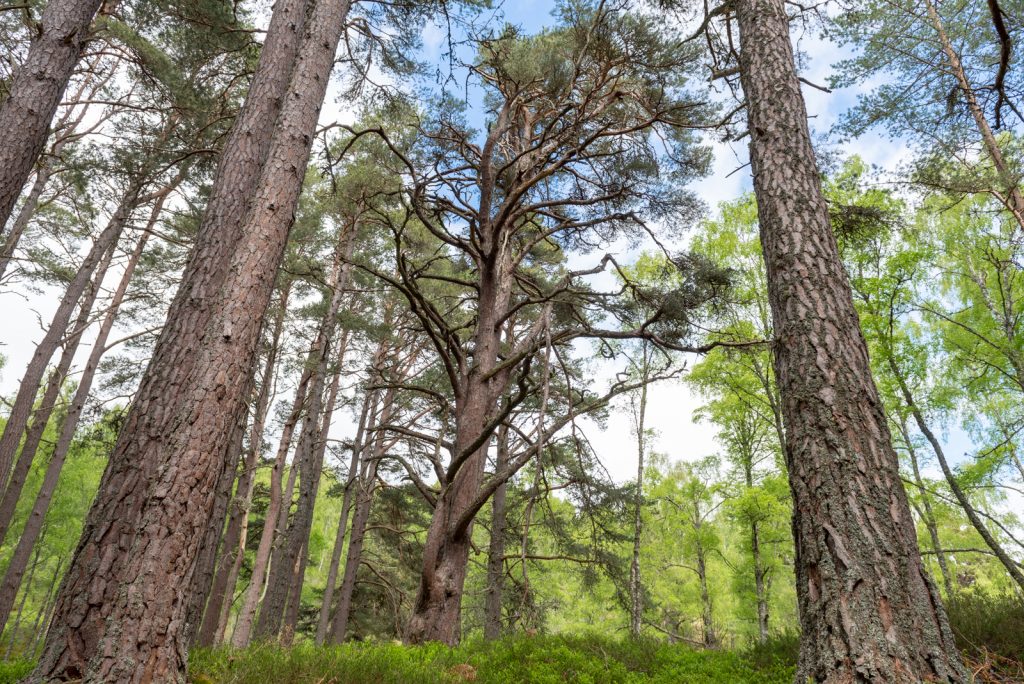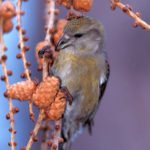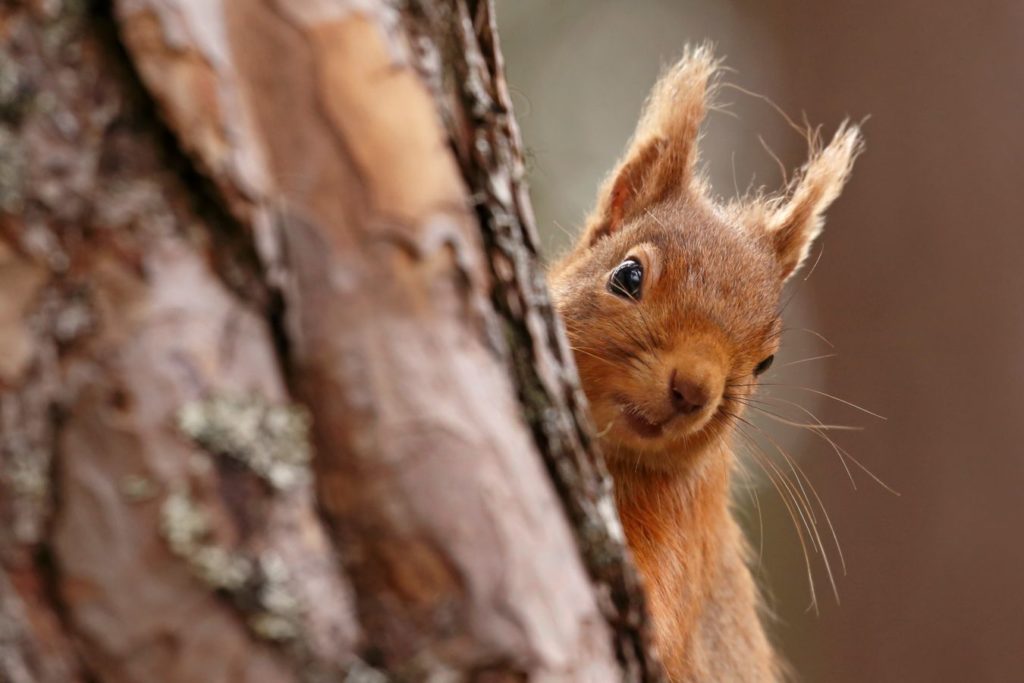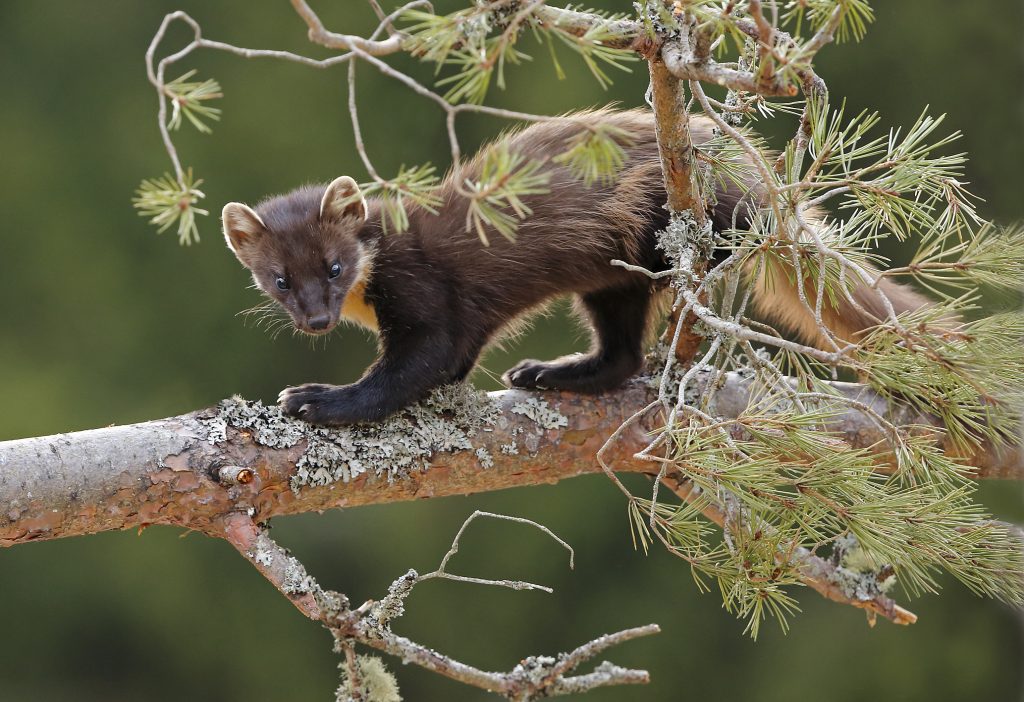BBC Springwatch is back on our screens on Monday, broadcasting from The Dell of Abernethy, right here in the Cairngorms National Park!
Presenters Chris Packham, Michaela Strachan and Gillian Burke will be discovering more about the fascinating wildlife of Strathspey and the Cairngorms, from little bugs and beasties to predators like osprey that occupy the top of the food chain.
The forests of Rothiemurchus are home to a wide variety of native trees, including glorious ‘Granny’ pines, that provide important habitat and allows many of Scotland’s iconic and in some cases endangered wildlife to thrive.
Granny Pine

Although not as impressive as some older Granny pines this tree is branching out…
When you are walking along the paths by Loch an Eilein or beyond the Coylumbridge campsite you may notice that amongst the straight, tall pines there are some that look much older, more gnarled with large canopies and branches twisting off in all directions. These are the ‘Granny pines’, perhaps hundreds of years old, parents to the younger trees around them. Like people, trees respond to their environment. Pine trees growing close together race each other upwards for light and space to spread out their branches. Pine trees grown in the open soon spread out their limbs; the more branches they spread the more needles they have to power their growth and their flowers. The more twigs they shoot the more cones they hold the more seed they shed. ‘Granny pines’, as well as being picturesque, are the stately homes of the forest, providing special places for various other species. Their structure might include crevices that hold water that gradually fill with rotting needles. Pine hoverfly larvae might find a suitable home and larder in these ‘soup pots’. As needles fill the crevices they will eventually begin to dry out and for a while, they might be a ‘raised bed’ for blaeberry or a rowan seedling.
Over centuries ‘Granny’ trees weather the storms, but not without injury. Cracks in the stem, if deep enough allow bats to roost during long summer days. The tree will have sympathetic unions with mushrooms in the soil to help them get minerals in exchange for sugars, but other fungi can eat away the centre of the old trees to create cavities that might be occupied by wasps, then birds and perhaps eventually they will be big enough to become a pine marten’s cot. All the while the spreading branches continue to grow, but slowly, and the spread of horizontal crown is a favourite ‘table’ for capercaillie or black grouse to come and dine on buds and shoots.

Crossbill feeding – Wild Scotland
Crossbills might also sneak a nest in under the ‘table cloth’ of needles! Underneath the canopy, the older branches have now died from lack of sunlight and their surfaces used by various lichens and wood boring insects have drilled into them. Woodpeckers soon follow! Our care and stewardship of the forest has to include ensuring the ‘grannies and grandads’ of the forest world are replaced as they retire entirely into ‘deadwood habitat’; so a programme of felling, regeneration and thinning ensures we have a forest of trees of all ages and varied spacing so that some will spread their limbs and grow-away to become the ‘Granny pines’ of the future.
Red Squirrels

Red Squirrel – photograph courtesy of Neil McIntyre
The forest of Rothiemurchus has always been a stronghold for our charming native squirrel. At this time of year, they can be glimpsed running up and down the trunks of pine trees. However, the special squirrel feeders at Loch an Eilein are the best place to watch them, especially in the mornings when there are fewer people around. Please watch out for them when you are driving through woodland as they are not aware of the Highway Code!
Pine Marten

Pine Marten – photograph courtesy of Neil McIntyre
Once the second most common carnivore in the UK, the pine marten is another animal that has suffered major population decline due to loss of habitat and overzealous predator controls in the last century. Conservation efforts have seen their numbers bounce back in recent years and efforts are being made to reintroduce them to other parts of the country. They are elusive creatures usually preferring the cover of woodland and heights of the treetops.
Timberman Beetles

Two Timberman Beetles – image courtesy of Stewart Taylor
These impressive little creatures depend on the deadwood in the forest, this is how they earned the name Timberman. They are identifiable by their antennae, which on the males are four times longer than their body! During the breeding season, they use these antennae to ‘sniff’ out dead wood for the female to lay her eggs in. Once hatched the larvae will spend two years munching away before they reach adulthood.
Osprey

Osprey – photograph courtesy of Neil McIntyre
While these seasonal guests may not call Rothiemurchus home they certainly consider Rothiemurchus Fishery one of their favourite spots to ‘grab a carry oot’ to feed their chicks. From the beginning of April until they migrate south at the end of the summer these fascinating birds are a regular sight circling above the fishery. Early morning guided photography sessions provide experienced photographers with the opportunity to get amazing shots of Ospreys diving for wriggling rainbow trout.
